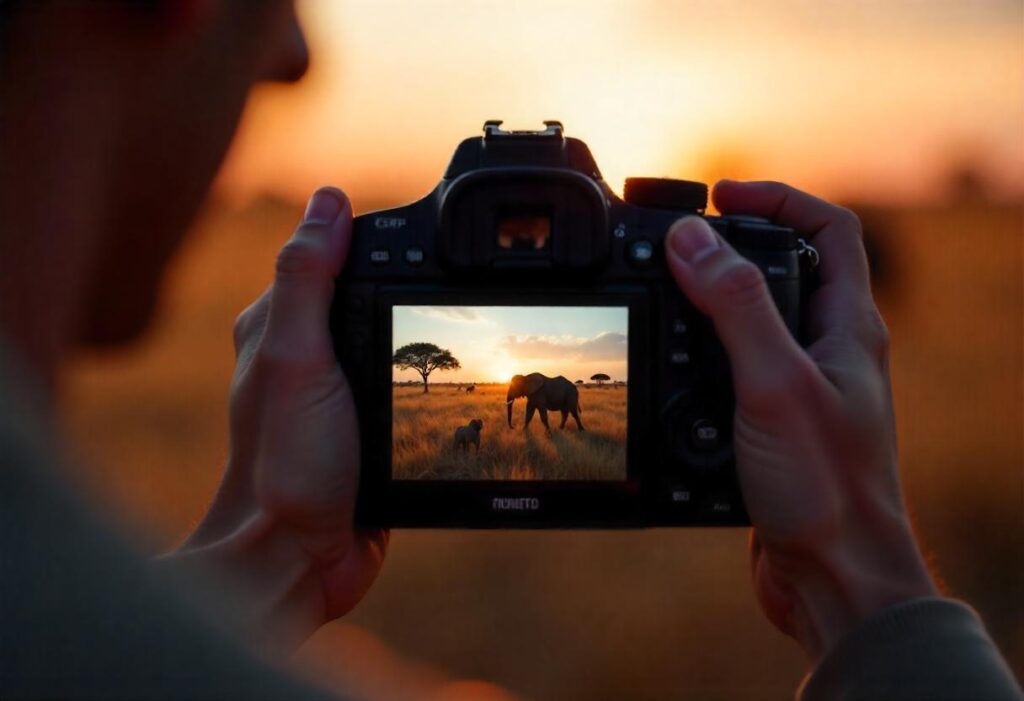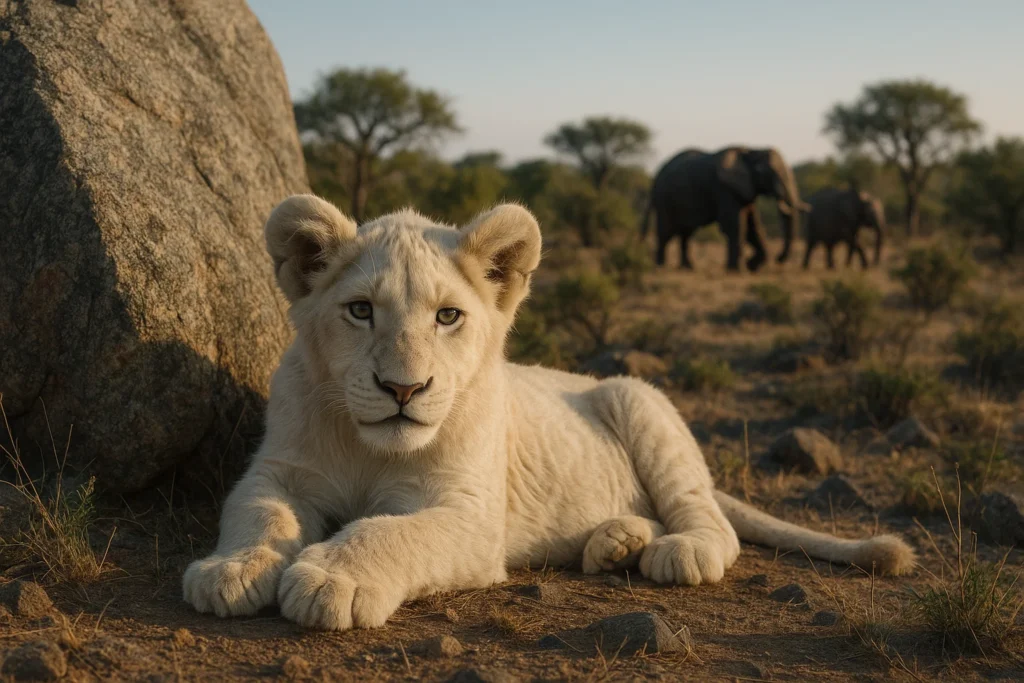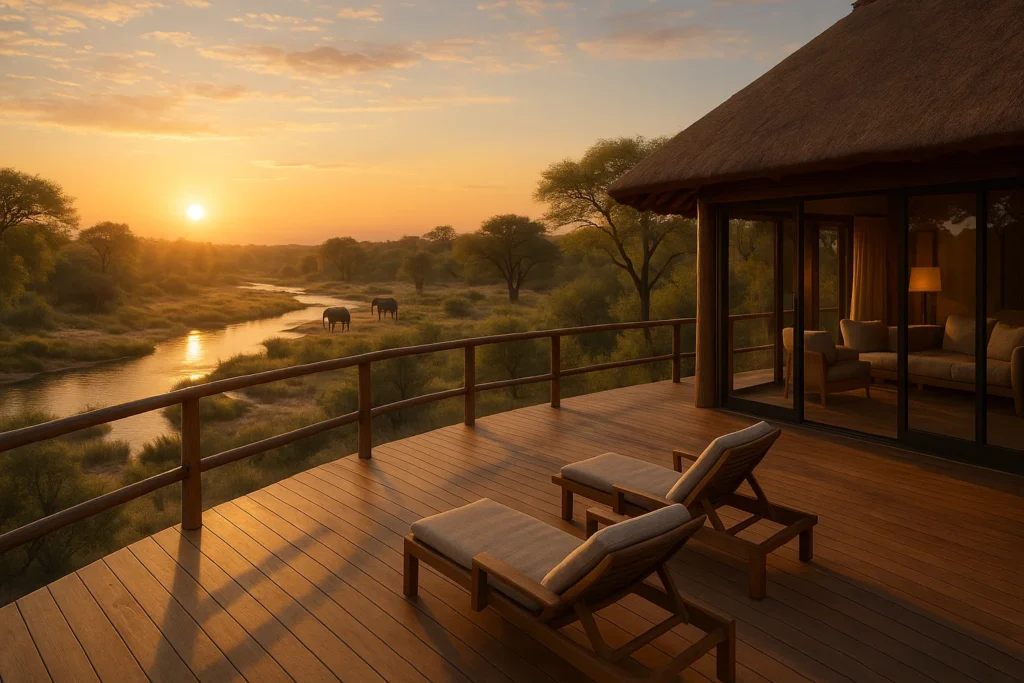Capturing incredible images on safari requires more than a good eye—it also demands the right camera settings. Wildlife moves fast, lighting conditions change constantly, and your window for the perfect shot is often just seconds long. In this guide, we’ll walk you through the best camera settings for safari photography so you can return home with truly breathtaking wildlife shots.
Choosing the right shooting mode
Aperture Priority (A or Av mode)
Aperture priority is ideal when you’re dealing with unpredictable lighting or need to quickly adjust your depth of field. It allows you to control how much of the scene is in focus, while the camera automatically selects the appropriate shutter speed.
- Use for: Portraits of animals, big cats in soft light, elephants against blurred backgrounds
- Suggested aperture: f/4 to f/5.6 for wildlife isolation
Shutter Priority (S or Tv mode)
If you’re tracking fast-moving animals like birds or predators on the move, shutter priority gives you control over motion blur.
- Use for: Birds in flight, galloping zebras, running cheetahs
- Suggested shutter speed: 1/1000 sec or faster
Manual mode
Advanced users often prefer full manual control, especially with consistent lighting or when shooting with a fixed ISO.
- Use for: Professional shots, low light scenes, creative exposure control
Recommended settings for key safari scenarios
| Scenario | Shutter Speed | Aperture | ISO | Notes |
|---|---|---|---|---|
| Big cats resting | 1/500 | f/4 – f/5.6 | 100–400 | Emphasize detail and sharpness |
| Birds in flight | 1/2000 | f/5.6 – f/8 | 800–1600 | Fast shutter essential |
| Herds on the move | 1/1000 | f/6.3 | 400–800 | Balance sharpness and depth |
| Sunrise/sunset silhouettes | 1/250 | f/8 | 100–400 | Expose for the sky |
| Night safari with spotlight | 1/125 | f/2.8 | 1600–3200+ | Use a monopod or image stabilizer |
Focus settings that make a difference
Continuous autofocus (AI-Servo / AF-C)
Wildlife rarely stays still. Continuous AF tracks movement and helps keep fast subjects in focus.
Back-button focus
Separating focus from the shutter allows for better control when recomposing or tracking subjects.
Focus area mode
- Single-point AF: For precision focus on the eyes of an animal
- Zone AF: Better for moving subjects or when tracking unpredictable wildlife
Getting your exposure right
Use exposure compensation
When photographing animals against bright skies or in harsh sunlight, use exposure compensation (+/-) to prevent overexposure or underexposure.
- Tip: Dial +0.3 to +1 when animals are backlit
- Tip: Use -0.3 to -1 when photographing bright or white animals in sunlight
Check your histogram
Don’t rely solely on the LCD screen. The histogram shows whether you’re losing detail in shadows or highlights and helps fine-tune exposure.
ISO settings for different lighting conditions
- Bright daylight: ISO 100–400
- Overcast days or golden hour: ISO 400–800
- Low light or shade: ISO 800–1600
- Night safari: ISO 1600–6400+
Use Auto ISO with limits if your camera allows, to balance exposure and reduce noise.
White balance tips for safari
- Daylight: For consistent colors under the African sun
- Cloudy: Adds warmth during overcast or early morning scenes
- Custom white balance: Use a gray card or neutral surface if you’re shooting in RAW and need high accuracy
Shoot in RAW format
Always shoot in RAW to preserve maximum detail and allow for better post-processing. JPEGs compress image data and leave little room for correcting exposure or color.
Additional tips to level up your shots
Use burst mode
Wildlife moments are fleeting. Set your camera to high-speed continuous shooting to capture a sequence and choose the best frame later.
Stabilize your gear
- Use a bean bag on vehicle windows for stability
- A monopod or image-stabilized lens helps during handheld shots
Compose with intention
- Eye contact creates emotional impact
- Leave space for movement when an animal is in motion
- Use the rule of thirds, but don’t be afraid to break it when the scene calls for it
Frequently asked questions
1/1000 sec or faster is ideal for moving wildlife. For still subjects, 1/500 sec works well.
Yes, auto ISO can be helpful if you set upper limits to prevent excessive noise.
A tripod is often impractical in vehicles. Use a bean bag or monopod for support instead.
A lens with an aperture of f/4 or f/2.8 is great for low light, but even f/5.6 can work in daylight with proper settings.
Yes, but you’ll be limited in zoom and manual control. Use it for landscapes or behind-the-scenes shots.






